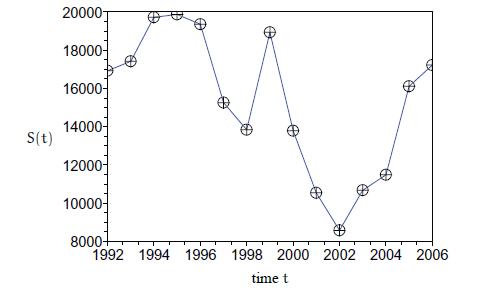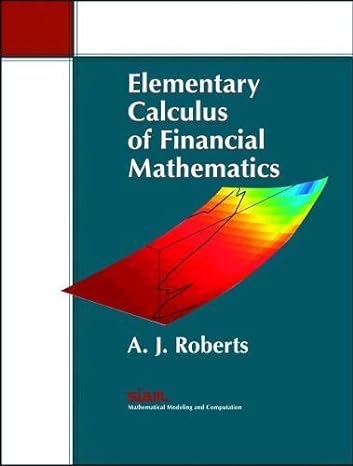1.19. Alice buys a put option from Bob (see Definition 1.13), strike price X, for some fair...
Question:
1.19. Alice buys a put option from Bob (see Definition 1.13), strike price X, for some fair price P which you are to determine by arguments similar to those employed for call options. Investigate one step of a binomial model for determining the value of the put option, then apply your result to a multiperiod binomial lattice.

1. First, argue that at the expiry of the put option when the asset has price S, the option has value P = max{0,X−S} by considering the casesXS.
See that a put option, unlike a call option, becomes more valuable the lower the asset price.
2. Second, at the start of a time interval Alice constructs a portfolio of one bought put option, value P, and hedges with φ units of the asset, each of price S. At the end of the time interval the value of the portfolio will be Pu+ φSu if the asset goes up in price by a factor of u and Pd+φSd if the asset goes down in price by the factor
d. Argue that for a risk-free result the hedge ratio φ = (Pd−Pu)/(Su−Sd) .
3. Lastly, argue that if such a risk-free portfolio is to give the same return as bonds, which increase in value by a factor of R over the interval, then the value of the put option at the start of the interval is the same expression as (1.8), namely P = 1 R
R−d u−d Pu+
u−R u−d Pd .
4. Hence estimate a fair value of a put option when the initial asset price is $50, the exercise price of the put option is also $50, the rate of interest for bonds is 10%, and the period is one year. Assume that the asset price moves up by 25%
or down by 20% per year.
5. Revise the MATLAB/SCILAB code of Exercise 1.16 to estimate the value of the above put option using an n = 4 , 32, 128, and 512 step binomial lattice.
Step by Step Answer:

Elementary Calculus Of Financial Mathematics
ISBN: 978-0898716672
1st Edition
Authors: A. J. Roberts Edition





